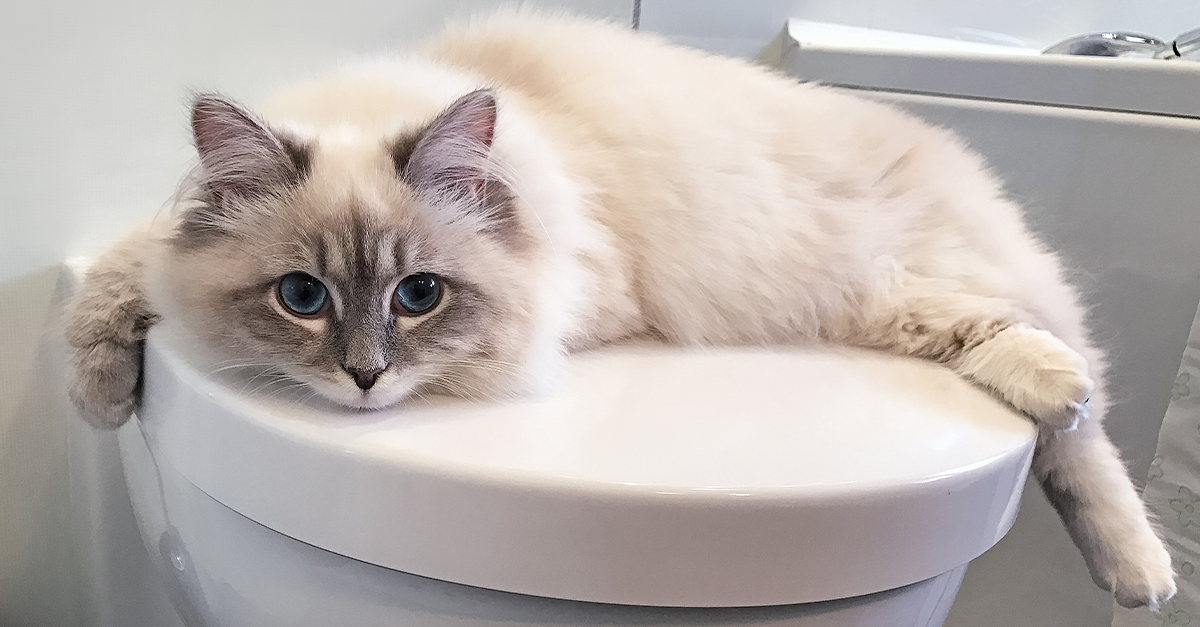Why You Should Never Flush Cat Poop Down Your Toilet - Crucial Information
Why You Should Never Flush Cat Poop Down Your Toilet - Crucial Information
Blog Article
Each person seems to have their unique piece of advice in relation to Can You Flush Cat Poop Down The Toilet?.

Introduction
As feline owners, it's important to be mindful of exactly how we dispose of our feline good friends' waste. While it may seem practical to flush feline poop down the commode, this practice can have destructive consequences for both the atmosphere and human health.
Environmental Impact
Purging cat poop presents hazardous virus and bloodsuckers into the water system, posing a considerable threat to aquatic environments. These impurities can negatively influence marine life and compromise water high quality.
Wellness Risks
In addition to environmental worries, purging pet cat waste can also present wellness threats to human beings. Feline feces may include Toxoplasma gondii, a bloodsucker that can create toxoplasmosis-- a possibly severe disease, especially for expectant women and people with weakened immune systems.
Alternatives to Flushing
The good news is, there are safer and extra responsible means to take care of feline poop. Think about the adhering to alternatives:
1. Scoop and Dispose in Trash
One of the most typical method of disposing of feline poop is to scoop it into an eco-friendly bag and toss it in the garbage. Be sure to use a committed clutter scoop and throw away the waste without delay.
2. Usage Biodegradable Litter
Go with naturally degradable pet cat litter made from products such as corn or wheat. These trashes are eco-friendly and can be securely thrown away in the garbage.
3. Bury in the Yard
If you have a yard, consider burying pet cat waste in a marked location away from vegetable yards and water resources. Make sure to dig deep sufficient to prevent contamination of groundwater.
4. Install a Pet Waste Disposal System
Buy a family pet garbage disposal system particularly designed for cat waste. These systems use enzymes to break down the waste, reducing smell and ecological effect.
Conclusion
Liable pet dog ownership extends past supplying food and shelter-- it also involves correct waste administration. By refraining from purging feline poop down the bathroom and opting for different disposal techniques, we can minimize our ecological footprint and protect human health.
Why Can’t I Flush Cat Poop?
It Spreads a Parasite
Cats are frequently infected with a parasite called toxoplasma gondii. The parasite causes an infection called toxoplasmosis. It is usually harmless to cats. The parasite only uses cat poop as a host for its eggs. Otherwise, the cat’s immune system usually keeps the infection at low enough levels to maintain its own health. But it does not stop the develop of eggs. These eggs are tiny and surprisingly tough. They may survive for a year before they begin to grow. But that’s the problem.
Our wastewater system is not designed to deal with toxoplasmosis eggs. Instead, most eggs will flush from your toilet into sewers and wastewater management plants. After the sewage is treated for many other harmful things in it, it is typically released into local rivers, lakes, or oceans. Here, the toxoplasmosis eggs can find new hosts, including starfish, crabs, otters, and many other wildlife. For many, this is a significant risk to their health. Toxoplasmosis can also end up infecting water sources that are important for agriculture, which means our deer, pigs, and sheep can get infected too.
Is There Risk to Humans?
There can be a risk to human life from flushing cat poop down the toilet. If you do so, the parasites from your cat’s poop can end up in shellfish, game animals, or livestock. If this meat is then served raw or undercooked, the people who eat it can get sick.
In fact, according to the CDC, 40 million people in the United States are infected with toxoplasma gondii. They get it from exposure to infected seafood, or from some kind of cat poop contamination, like drinking from a stream that is contaminated or touching anything that has come into contact with cat poop. That includes just cleaning a cat litter box.
Most people who get infected with these parasites will not develop any symptoms. However, for pregnant women or for those with compromised immune systems, the parasite can cause severe health problems.
How to Handle Cat Poop
The best way to handle cat poop is actually to clean the box more often. The eggs that the parasite sheds will not become active until one to five days after the cat poops. That means that if you clean daily, you’re much less likely to come into direct contact with infectious eggs.
That said, always dispose of cat poop in the garbage and not down the toilet. Wash your hands before and after you clean the litter box, and bring the bag of poop right outside to your garbage bins.
https://trenchlesssolutionsusa.com/why-cant-i-flush-cat-poop/

As a reader on Don’t flush cat feces down the toilet, I imagined sharing that blog post was sensible. Enjoyed reading our write-up? Please share it. Help someone else locate it. Thank-you for taking the time to read it.
Click Here Report this page